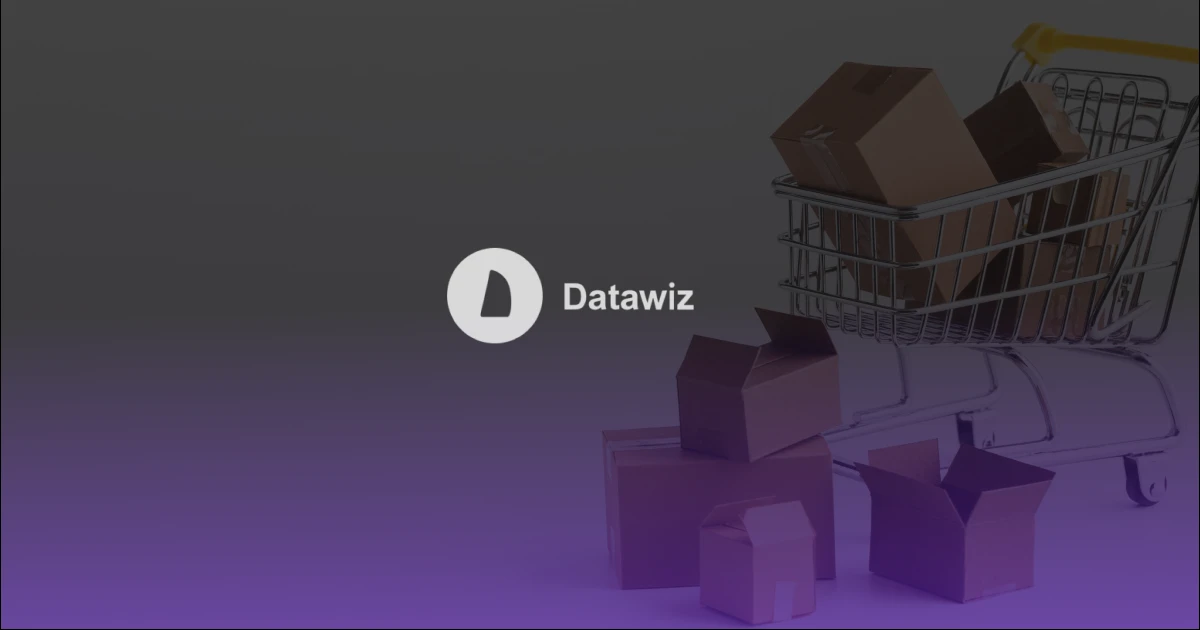Inventory is the beating heart of any retail business. Whether you run a small grocery store or manage a multinational retail chain, knowing exactly what remains on your shelves at the end of an accounting period is crucial for profitability, compliance, and strategic growth. This figure — called ending inventory or closing inventory — affects not only financial reporting but also purchasing decisions, demand forecasting, and overall supply chain efficiency.
In this comprehensive guide, we’ll explore in depth how to calculate ending inventory, why it matters, and what methods retailers can apply to compute it accurately. We’ll also look at common challenges, practical examples, and the role of retail analytics software in improving inventory accuracy.
What Is Ending Inventory?
Ending inventory refers to the value of products still available for sale at the end of a specific accounting period. It is the balance of unsold goods after accounting for beginning inventory, purchases, and sales (or cost of goods sold).
The ending inventory formula is straightforward but powerful:
Ending Inventory = Beginning Inventory + Purchases – Sales (or COGS)
This figure directly influences gross profit, net income, and tax liability. For retailers, it also informs restocking strategies, vendor negotiations, and even pricing tactics.
Why Is Closing Inventory Important?
- Financial Reporting: Closing inventory is reported on the balance sheet as a current asset and is essential in calculating cost of goods sold on the income statement.
- Profitability Analysis: Small errors in ending inventory calculation can inflate or deflate profits. Overstating inventory reduces COGS and makes profits look higher than they actually are, while understating inventory does the opposite.
- Operational Decisions: Retailers rely on inventory data to determine purchase orders, plan promotions, and prevent stockouts or overstock situations.
- Forecasting and Budgeting: Accurate ending inventory data improves demand planning and long-term financial projections.
- Financing: Banks and investors often evaluate a retailer’s inventory valuation before extending credit or investment.
Even with analytics software, most retailers still conduct physical counts at year-end or via cycle counts. These help reconcile differences between system records and reality — often due to theft, shrinkage, or human error. Integrating physical verification with digital tracking provides the most reliable inventory figures.
Ending Inventory Formula in Action
Let’s consider a simple example:
- Beginning Inventory: $50,000
- Purchases during the period: $30,000
- Cost of Goods Sold: $60,000
Ending Inventory = $50,000 + $30,000 – $60,000 = $20,000
That $20,000 represents the value of goods remaining in stock at the close of the accounting period.
The Difference Between Ending Inventory and Average Inventory
- Ending Inventory reflects stock value at a single point in time — the last day of the accounting period.
- Average Inventory smooths out fluctuations by calculating the mean of beginning and ending inventory over a period.
Retailers use average inventory for performance metrics like inventory turnover ratio, while ending inventory is essential for financial statements and net income reporting.
Methods for Calculating Ending Inventory
There is no one-size-fits-all approach to inventory valuation. Retailers may select a method based on product type, tax strategy, or reporting requirements. Below are the most common approaches, each with formulas and retail-specific examples.
1. FIFO (First In, First Out)
FIFO assumes that the oldest inventory is sold first, leaving the newest purchases in stock.
Formula:
Remaining Units × Most Recent Purchase Price(s)
- Advantage: Reflects current market prices in ending inventory, which is useful during periods of inflation.
- Retail Example: A fashion retailer buys 200 T-shirts: 100 at $8 and later 100 at $10. If 120 are sold, the 80 remaining units are valued at the latest cost ($10 each), giving an ending inventory of $800.
FIFO provides a more realistic balance sheet valuation and is often preferred in retail where older stock sells faster.
2. LIFO (Last In, First Out)
LIFO assumes the most recently purchased items are sold first, leaving older stock in inventory.
Formula:
Remaining Units × Earliest Purchase Price(s)
- Advantage: During inflation, LIFO matches higher costs with sales, reducing taxable income.
- Disadvantage: Ending inventory on the balance sheet may be undervalued, as it reflects older purchase costs.
- Retail Example: A grocery chain buys 500 cans of soup: 250 at $1.00 and 250 at $1.20. If 300 are sold, the 200 remaining units come from the earlier batch ($1.00 each), valued at $200.
Though common in the U.S., LIFO is not permitted under IFRS standards, limiting its global use.
3. Weighted Average Cost (WAC)
This method spreads total costs evenly across all units available for sale.
Formula:
Weighted Average Cost per Unit = Total Cost of Goods Available ÷ Total Units Available
Ending Inventory = Unsold Units × Weighted Average Cost
- Advantage: Smooths out price fluctuations over time.
- Retail Example: A tech retailer buys 300 phone chargers: 150 at $5 and 150 at $7, for a total of $1,800. Average cost = $6 per unit. If 200 units are sold, the 100 remaining are valued at $600.
This approach is particularly useful when retailers manage large quantities of identical products.
4. Gross Profit Method
The gross profit method estimates ending inventory by applying a historical gross margin percentage to net sales.
Steps:
- Estimated COGS = Net Sales × (1 – Gross Profit %)
- Apply ending inventory formula: Beginning Inventory + Purchases – Estimated COGS
- Retail Example: A retailer records $100,000 in net sales with a 40% gross profit margin. Estimated COGS = $60,000. If beginning inventory was $30,000 and purchases $50,000, ending inventory = $20,000.
This method is common when physical counts are not feasible, such as after a warehouse fire or system failure.
5. Retail Method
The retail method uses the relationship between cost and retail price to estimate ending inventory.
Formula:
Cost-to-Retail Ratio = Cost of Goods Available ÷ Retail Value of Goods Available
Ending Inventory at Cost = Ending Inventory at Retail × Cost-to-Retail Ratio
- Retail Example: Goods available cost $80,000 but are priced for $100,000 at retail. The ratio is 0.8. If $30,000 remains in stock at retail value, ending inventory = $24,000 at cost.
This method is ideal for large retail chains with broad assortments and frequent product changes.
Practical Examples of Ending Inventory Calculation
To better understand how calculations work, let’s review multiple retail scenarios.
- Sales-Driven Change
- Beginning Inventory: $40,000
- Purchases: $20,000
- Sales (COGS): $45,000
- Ending Inventory = $15,000
This store needs to reorder popular items quickly to avoid stockouts.
- Purchase-Heavy Period
- Beginning Inventory: $25,000
- Purchases: $30,000
- Sales (COGS): $20,000
- Ending Inventory = $35,000
Overstocking ties up cash flow. Clearance discounts may be necessary.
- Unexpected Loss
- Beginning Inventory: $60,000
- Purchases: $40,000
- Sales (COGS): $80,000
- The formula suggests $20,000, but a physical count reveals only $18,000 due to shrinkage.
- Adjusted Ending Inventory = $18,000
Shrinkage highlights the need for stronger loss prevention.
- Inflation Impact (FIFO vs. LIFO)
A retailer buys 100 units at $5 and later 100 at $7. They sell 120 units.- Under FIFO: Ending Inventory = 80 units × $7 = $560
- Under LIFO: Ending Inventory = 80 units × $5 = $400
The method chosen alters reported profit, tax liability, and balance sheet strength.
- Retail Method in Large Chains
A supermarket has goods costing $200,000 with a retail value of $250,000 (ratio = 0.8). If $50,000 remains at retail price, ending inventory = $40,000.
Challenges in Calculating Ending Inventory
- Vendor Issues: Late deliveries, inaccurate invoices, or returns complicate purchase tracking.
- Demand Fluctuations: Sudden spikes or drops in sales make forecasting more complex.
- Human Error: Manual counts and recording mistakes can distort ending inventory values.
- Profitability Impact: Inaccurate inventory directly affects reported net income and taxes.
- Technology Gaps: Without robust analytics, inventory data may be siloed and outdated.
Regular cycle counts, strong vendor management, and analytics-driven oversight minimize these challenges.
Software for Ending Inventory Calculation
Modern retailers rarely rely on manual counts alone. Inventory management software integrated with POS systems ensures that every sale and purchase updates stock levels in real time. This not only streamlines ending inventory calculation but also provides accurate data for forecasting and decision-making.
Advanced solutions likeDatawizhelp retail chains automate reporting, detect discrepancies between system records and physical stock, and improve turnover ratios. Combining software with periodic physical checks ensures inventory figures are both timely and accurate.
Learning how to calculate ending inventory is more than an accounting exercise — it’s a strategic necessity for retailers aiming to stay competitive. By applying the right valuation methods, verifying data through physical counts, and using analytics-driven software, businesses can ensure accuracy, minimize losses, and maximize profitability.
Whether you need to determine, compute, or simply calculate ending inventory, mastering this process enables smarter decisions across your retail chain. And with solutions like Datawiz, retailers gain a powerful advantage in transforming raw inventory data into actionable insights.
 Novedades
Novedades





 ¡No se necesita tarjeta bancaria!
¡No se necesita tarjeta bancaria!